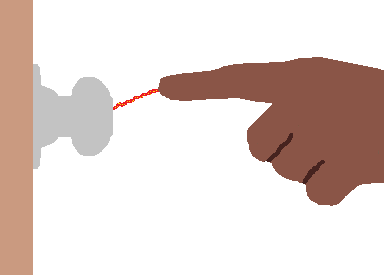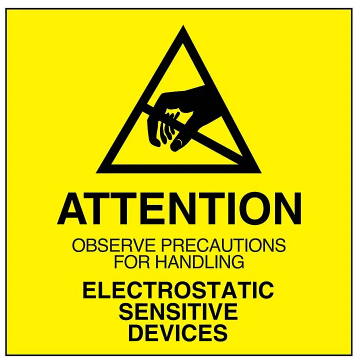Go Home
Go To Introduction
This is Book 1
Chapter 1 - Electricity
Chapter 1.2 - The Numbers
Chapter 2 - Sharing and Bonding
Chapter 3 - Voltage
Chapter 3.2 - Voltage Static
Chapter 3.3 - Batteries
Chapter 3.4 - Solar - Others
Chapter 4 - Resistance
Chapter 4.2 - Parallel Resistance
Chapter 4.3 - Voltage Dividers
Chapter 5 - Semiconductor
Chapter 5.2 - PNP NPN Junctions
Chapter 6 - Capacitor
Back To The Guide
To Book 2
Don't Give Me Static
There are several ways to think about electricity or put it into categories. One way is to
consider whether electricity is Static or Dynamic.
Static Electricity
There are less dramatic displays of static electricity other then the example in the earlier
section of the electrical storm. Such is the case when we generate static electricity by
walking around and then feel the discharge spark by touching another person or some object.
This static charge is generated by movements (friction) and stored on the body.
Static electricity is a very high voltage, or a very great imbalance in the level of charge.
This voltage is so high that many people consider only the voltage portion of the charge
and do not give much consideration the other electrical characters of static electricity.
Static electricity is considered, by many, as unmanaged electricity. Static electricity,
however, can be a great problem for some electronic components, as well as in other places
within our daily lives. So at some level, we need to manage this static energy.
Managing Static Electricity
We will not spend much time addressing static electricity, however, there are places and
times that static electricity can be very dangerous and should be managed.
One example is when working with flammable materials. You may have noticed that many filling
station gas pumps have signage telling where the emergency shutoff is located. Other signage
tells you to should stay close in attendance while filling your tank. There is a common
danger when sliding back into your car then out again during the filling process, because you
might build a static charge causing a spark in the gaseous vapors, when you remove the nozzle
from your car.
Another need where electrostatic discharges should be managed is when working with sensitive
electronic components. Often grounding wrist straps or protective clothing are used while
working with electronics. A basic knowledge is needed to properly protect circuitry used
this book, but a topic is to vast to fully cover here. With the static risk to the parts,
some electronic parts comes in pink plastic bags or other special carriers. The study of
managing static (ESD) is a fascinating field in and of itself. If you plan to spend a lot of
time working with electronic circuit boards, it may be well worth your time and energies to
read more on the subject of ESD. You may be asked to setup an ESD protected electronics
workshop someday.
Dynamic Electricity
Generally, in my works I will be address dynamic electricity as simply electricity. If I
address static electricity I will call it static electricity In this series I will address
electricity at rest, as in a battery or an open circuit, and electricity in motion, where
electrons are flowing, as electricity.
General Sources of Voltage
One of the more common sources of electricity come from chemical
reactions similar to those in our everyday batteries. A second source is from
electromagnetic reactions. This is the method used in power plants
and wind turbine generators, and from our automobiles alternator.
There are less commonly known forms of generating electricity. They include
photovoltaic (solar cells) which converts sunlight (photons) directly into
electricity (electrons), piezoelectric which converts kinetic
energy (crystal under pressure) into electricity, betavoltaics
which converts radioactive energy directly into electricity and a
thermocouple where dissimilar metals are bonded together and produce
electricity with thermal changes.
After this warning message, I will start with the battery.
WARNING:
HAZARDOUS TO YOUR HEALTH
Working with electricity MAY BE HAZARDOUS TO YOUR HEALTH.
Some components are a hazard for infants, and children.
Small parts are a swallowing hazard for infants and children.
Equipment and labs may use lethal voltages.
Be very cautious when working with electricity.
Hand tools may be hazardous.
Proper precautions should be used.
Some electronic components and electrical wiring contain lead.
Lead is a health hazardous.
Do not place components or wiring in your mouth.
Do not eat while working with electronic components or wiring.
Prior to eating, wash your hands thoroughly.
« Previous Chapter Next Chapter »
Email us: info@shoeboxkits.com


